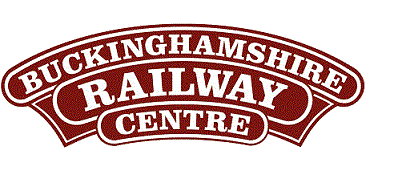
BRC Website Home
Quainton Virtual Stockbook
Quainton News Archive -
Quainton News No. 15 - March 1973
The Wotton Tramway: Rise and Fall Part 2 - The Early Years, Construction and Opening

BRC Website Home
Quainton Virtual Stockbook
Quainton News Archive -
Quainton News No. 15 - March 1973
The Wotton Tramway: Rise and Fall Part 2 - The Early Years, Construction and Opening

Photo: |
|
On 8th September, 1870 work started on building the tramway to provide a rail connection with the Wotton estates from Quainton Road on the Aylesbury and Verney Junction line which had been opened two years earlier. Parliamentary powers were not required because the route was entirely on the Duke of Buckingham's own property excepting in the immediate vicinity of Quainton Road station which was on land leased by the Duke at £12 per annum from the Winwood Charity. The general construction was not difficult because the line was over reasonably level country and therefore there were no severe gradients or heavy earthworks. Wotton is, in fact, about fifty feet lower in altitude than Quainton Road and there were two short stretches of 1 in 78 against motive power when working towards Quainton. The estate workers made good progress during the winter of 1870/1, as did the contractors for the laying of the permanent way, Messrs. Lawford and Horton. The ballast was brought by rail over the Oxford line and then down from Verney Junction to Quainton Road. The rails used were very light in weight, only 30 lbs per yard, and they were of bridge section. They were purchased for £8/2/6 a ton from Townsend Wood and Co, Briton Ferry, South Wales and were laid on longitudinal timber sleepers with suitable cross members to maintain the gauge and alignment. The sleepers, which cost 1/10d a foot run were formed from imported Norwegian timber and they were protected against rot by creosoting. The rails were secured by fang bolts to the sleepers and there were oak fish pieces to join the lengths of rail. |

|
|
There were three points where the tramway crossed public roads between Quainton and Wotton and these level crossings are shown clearly on Peter Scott's map accompanying this article. Two goods sheds were built, each 60 feet long and 25 feet wide and the standards and techniques adopted by the Duke for his railway were soon recognised by other interested parties. In fact the line was considered as an excellent example of the branch line constructed quickly and economically. The land was, of course, not a charge against the cost of the railway but, even so, the sum of £1400 a mile was very low indeed. The contractors presented a paper to the Institution of Civil Engineers in Ireland in 1872 and gave details of the construction of the tramway; likewise, one of the directors of the Bristol and Exeter Railway, Mr. Henry Ellis came to Quainton and was greatly impressed by what he saw and a pamphlet was published on the subject in Exeter in the same year. In the short period of seven months the 4¼ miles from Quainton Road to Church Siding at Wotton was completed and it was opened on 1st April, 1871 with stopping places at Waddesdon Road and at Westcott. The track on the 1½ miles long Kingswood Lane or Moat Farm branch from Church Siding was being laid during the spring and the tramway was also being extended towards Wood Siding. Both extensions were opened in November 1871 and formed a two pronged pair of lines serving the Wotton estate situated between the arms. Horses were used to pull the wagons to and from Quainton Road and the Duke had no intention, at first, of operating a passenger service although workmen or men accompanying cattle would no doubt, have been allowed. However, the availability of an improved means of access to the 'outside' world appealed to the local residents and in January 1872 the demand was met by attaching a hired carriage for passengers to two trains a day each way between Wotton and Quainton Road. At the same time the operation of the tramway was placed under the direction of the well known haulage firm, Messrs Chaplin and Horne. During the spring of 1872 the line of the Wotton Tramway was continued towards Brill village whose residents, in pursuit of their wishes to have the railway serve their community, had presented a petition to the Duke for construction of the extension. This new section was a different proposition to the relatively level branch as far as Wotton because the route had to climb over 125 feet in about 2½ miles from Wotton to Brill. Gradients as severe as 1 in 44 towards the terminus at the foot of Brill hill would have taxed the equine horse power and these were good reasons for the decision to turn the steam traction. In January 1872, and coinciding with the commencement of the passenger service from Wotton and several months before the opening to Brill the first locomotive was delivered from the Rochester firm of agricultural engine manufacturers, Messrs Aveling and Porter Ltd. This was the now famous six horse power four wheeled geared locomotive, makers No. 807, which, miraculously has survived the years and has been restored and preserved as a historic relic by London Transport. |
|
Notes: Reference: |
Text © Quainton Railway Society / Photographs © Quainton Railway Society or referenced photographer
Email Webmaster
Page Updated: 21 October 2017